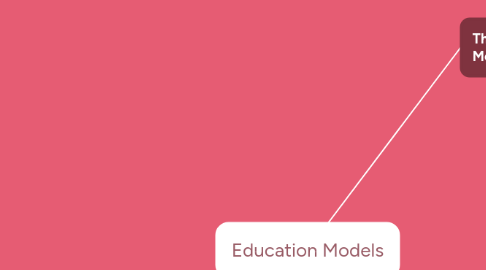
1. The Schoolwide Enrichment Model (SEM)
1.1. -Recognizes academic and creative-productive giftedness. -The model is a pullout program using a resource room for presenting enrichment to meet some of the unique needs of gifted students. -Emphasis on the schoolwide approach to selection and programming for students with talents and incorporates Type 1 and 2 enrichment in every classroom.
1.1.1. 3 major goals: -Maintain and expand a continuum of special services that will challenge students with the demonstrated superior performance or the potential for superior performance. -Infuse into the general education program a broad range of activities for high-end learning that will challenge all students to perform at advanced levels and allow teachers to determine which students should be given extended opportunities, resources, and encouragement in particular areas where superior interest and performance are demonstrated. -Preserve and protect the positions of special education specialists and any other specialized personnel necessary for carrying out these goals. (Reis and Renzulli, 2009)
1.2. SEM stems from The Enrichment Triad Model which are strategies used to expand student interests and develop their thinking and feeling processes. This model was extended and enlarged in scope to become the Schoolwide Enrichment Model which Includes:
1.2.1. -Type I general exploratory activities (provided by the teacher) 4 services are provided interest and learning-style assessment, curriculum compacting, general exploratory experiences, and group training activities. And -Type II group training activities (provided by the teacher) -Type III enrichment-individual and small group investigations of real programs. A specialist provides the service for students identified as ready to pursue an independent project of personal interest. Students usually show their gifted behavior. The student focuses on real-world methods to provide firsthand experience in a particular field of interest at an advanced level.
1.3. The enrichment Triad-Revolving Door model are also part of the SEM, with procedures and materials available at the elementary and secondary levels.
1.3.1. -At the secondary level, faculty members who volunteer to participate from each of the major academic areas. -Meets on a regular basis, responsible for planning and organizing the program goals and activities, curricular compacting options, and schoolwide enrichment opportunities (Renzulli et.al., 2009). -Materials provide step-by-step delivery of service. Materials include the Interest-a-Lizer, the Curriculum Compactor, and Steps Guiding Students through Type III projects. Most of the program and curricular operations can be easily followed and adapted to any setting.
2. The Grid
2.1. Kaplan’s model which organizes all the components of a differentiated curriculum.
2.1.1. -Differentiated curriculum for gifted students. -The components are content-based ie. productive thinking skills, research skills, and basic skills. -The products are themed-based. This provides students with options.
2.2. Affective concerns, descriptions of learning experiences, and activities are important parts of the model.
2.3. - For heterogeneous class, small homogenous group, or an individual student.
2.4. Teacher-directed lessons or student-centered activities that are collaborative or independent. Students can complete their own grids, aligned to their needs, interests, and abilities.
2.4.1. Content
2.4.1.1. The knowledge and information defined as useful, important, timely, and interesting to acquire. The relationship of economic, social, personal, and environmental concerns to the needs and interests of individuals, groups, and societies is her concept worthy of study.
2.4.1.1.1. Rules for selecting content: reference the theme, multidisciplinary, include information that all students are expected to learn, compatible with students’ needs and interests, ingrate subjects, and allow a time perspective that includes and relates past, present, and future.
2.4.2. The Processes
2.4.2.1. 1.Kaplan suggests a variety of categories of processes integrated into the curriculum planning and implementation. 2.Productive thinking skills, basic research skills, learning-to-learn skills, life skills, and technology skills.
2.4.3. The Product
2.4.3.1. - A Tool for learning and as a verification of learning. - Must be communicated visually, orally, and written formats and results from a variety of production skills.
